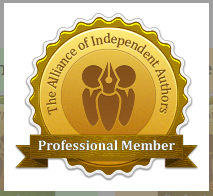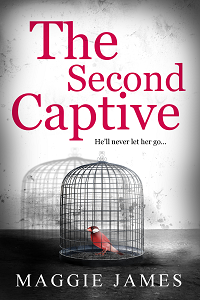 As a novelist, I often joke that my internet browsing history wouldn't stand up to police scrutiny. I frequently research unsavoury topics, along with some fascinating ones. The most interesting so far has been Stockholm syndrome, which I examined in 'The Second Captive'. For many people, the notion that a hostage can develop a strong attachment to, or even love, their abusers/kidnappers is hard to comprehend. It certainly made for an absorbing research topic! Not all things I've checked out have been such fun. For my fifth novel, 'After She's Gone', I looked into compulsive fire-setting, which brought me to the distinction between arson, pyromania and pyrophilia. Arson is the criminal act of deliberately setting light to property, often done for kicks or financial gain. Pyromania is different, as it involves an obsession with fire, resulting in anything being a target for burning, not just buildings. It was when I checked into pyrophilia that my research took a distinctly unsavoury turn. Pyrophiliacs are sexually aroused by fire, a fact I gleaned from a website devoted to unusual fetishes. I dislike sexual prudishness and don't care what capers consenting adults get up. However, some of the contributors to this website weren't concerned whether their sexual partner was consenting, an adult, or even human. The descriptions of torture turned my stomach. If I could scrub the mental images from my brain with bleach, I would, so enough on that topic. Here come the maggots and spider bites...! What else have I needed to research? Here's a rundown: His Kidnapper's Shoes - genetics concerning eye colour/the onset of childhood memories Sister, Psychopath - head trauma/babies being suffocated by cats Guilty Innocence - anonymity orders Blackwater Lake - hoarding disorder/decomposition rates of bodies in cold water After She's Gone - ketamine abuse and the hallucinations known as the k-hole Deception Wears Many Faces - con artists and love scams Silent Winter (my current work-in-progress) - the effects of solitary confinement and sensory deprivation on the brain For fun, I posed the question in a Facebook group, asking fellow authors about the worst thing they've ever had to research. Some, like me, reported having to check out ghastly sexual exploits. Here are some of the responses: 'The effects of a dangerous spider bite.' 'I researched how the KGB used to trial poisons on prisoners.' 'The effects of decomposition in water . . . how difficult is it to lop a head off with a sword . . . how far can a knife penetrate a chest and NOT kill the 13-yr-old victim instantly . . . home-made bombs. The list goes on!!' 'Civil War amputations and battlefield treatments.' 'Human trafficking and buried bodies.' 'Medieval torture - those guys were nuts!!!' 'Live maggots... too gross to write about. Give me a body any day...' 'How blue bottles lay eggs in dead bodies, and how that helps date the death. Left it out in the end!' 'A scene where a character has a needle plunged into her heart to revive her.' What about you? Wow, that's a fun list! I don't doubt I'll have lots more unsavoury topics to delve into as I develop my writing career - it's just a question of what. Research isn't something I especially enjoy, but I'm keen to make my novels accurate. I still blush with embarrassment at the email I received that pointed out Scotch is a whisky, not a pine tree, and that my reference to Scotch pines in 'Blackwater Lake' needed amending. Oops!
How about you? Have you ever read something ghastly in a novel and wondered, 'how the hell could the author investigate something so awful?' Authors, what about you? Have you ever researched anything stomach-churning? Would your internet browsing history stand up to inspection by the police?! Leave a comment and let me know!
2 Comments
Here's the stunning cover for my next novel, 'Silent Winter'... 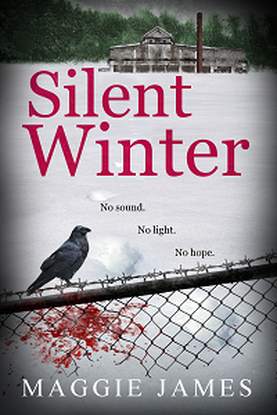 Isn't it gorgeous? 'Silent Winter' will be published on Thursday, December 5, 2019 and is now available for pre-order from Amazon in kindle format. The price will be just $0.99/£0.99 for the first week of sale before it rises to $3.99/$2.99. I'll be making the paperback version available for pre-order in November. Meanwhile, here's the link: Silent Winter, and here's what you can expect: On an icy November night, Drew Blackmore is beaten unconscious, then abducted. He awakes to find himself in total darkness, naked and chained to the floor. Fed just enough to keep him alive, Drew is unable to identify his captor, or the reason for his incarceration. As reality fades, hallucinations take over. Can Drew escape his prison before madness claims him? Meanwhile Drew's wife, Holly, despairing of ever seeing him again, turns to his brother for comfort. As the worst winter in decades sweeps the UK, she learns of Drew's tragic past. Could his disappearance be connected with that of a prostitute years before? A story of how the mind responds to solitary confinement, 'Silent Winter' examines one man's desperate attempt to survive the unthinkable. The most popular question to ask novelists  Novelists get asked this question more than any other. It's as if people think there are certain, very specific, stimuli that give rise to ideas for novel plots, and others that don't. Not so! Inspiration can be found everywhere, if you know where to look. When I'm asked where I get my ideas, I say 'from the world around me.' Writers tend to be great at observation, particularly people watching. Like many authors, I always have to hand a way of capturing ideas when they strike, whether it's via my phone or pen and paper. Right now, I have over fifty plot possibilities listed on my computer, and I'm betting that other authors may have double or triple that number. Novelists are capable of weaving plot ideas from virtually any situation. Take a simple example. I'm in a cafe, staring out of the window, and I spot a woman crossing the road. She's hurrying, her expression clouded; a small girl is clutching her hand. Immediately, this sparks several plot possibilities. Where does she need to get to so fast, and why? Is she running from something or someone? If so, what or whom? Is the child her own, or has she snatched her? What's causing her to look so worried? One very ordinary scenario, but with so much potential! Posing questions is a useful tactic I'm not suggesting every idea is worthy of being turned into a full-length book. Many aren't. An idea needs to be capable of sustaining characters and plot, and some might be better suited to a short story or subplot. When the right idea strikes, though, it's an amazing moment, at least for me. I get a strong gut instinct, signalling 'this is IT!' Intense excitement follows; for hours afterwards, my brain won't stop buzzing with ways to develop the idea into a novel. Television news and the press are useful for gathering ideas. Say, for example, I read about a hit-and-run accident. I immediately focus on the emotions involved, posing questions such as 'what if?' and 'how would that feel?' What mental turmoil must the driver be experiencing? Was he/she concerned about financial problems/their marriage/work issues, leading to careless driving? What will the consequences be? How is the victim's family coping? All rich sources of inspiration for the plot or subplot of a future novel! Themes as a source of inspiration Something else I find works well is to consider themes that appeal, ones evoking strong emotions. I turn a subject over in my brain, spinning out from a one-word premise, such as obsession, all the possibilities that arise. A mental mind map, if you like! For my sixth novel, 'Deception Wears Many Faces', I was drawn to the theme of betrayal. Duplicity elicits fierce emotions, from a desire for revenge to suicidal impulses. How did this idea originate? Television again. I watched a BBC documentary on the subject of con artists. As the sad stories unfolded, that familiar gut feeling hit me hard - YES! I knew I'd found the material for a future novel plot. Other potential sources of inspiration? This doesn't work for me, but many writers report using daydreaming or dreams themselves to spark their creativity. One of my novelist friends told me the plot of her first book came to her as she slept. Others say meditation or creative visualisation helps. Enter Plot Monkey! For fun a while ago, I tried out a piece of software (no longer available) called Plot Monkey. It's a random idea generator, based on who, what, how, when and where. Using those criteria, or whichever ones you select, it generates plot ideas. The results are hilarious. Take this gem it produced: two small boys wipe out an outlaw gang using a hammer to win fame during the civil war in Australia. Well, that's expanded my education! I was unaware Australia ever had a civil war... Or this: A herpetologist tries to destroy an Army base by being unfaithful to hide the truth during the civil war alongside a boat. Looks like our resident monkey has a thing for civil conflict... Here's my favourite, seeing as my fourth, 'The Second Captive', examines Stockholm syndrome: a person suffering from Stockholm Syndrome plays a deadly game with a hack saw to prove a point in the future in the desert. Nope, no hack saws or deserts in 'The Second Captive'! Sorry, Plot Monkey, I'll carry on getting ideas as and when they arise - you stick to finding your next banana! How would it feel to discover you'd been abducted as a child? 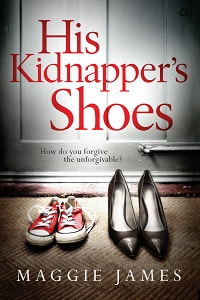 To illustrate the diverse sources of novel ideas, let's look at how I got the inspiration for four of my own books, starting with 'His Kidnapper's Shoes'. In 2010, I was chatting with fellow travellers in Vietnam, discussing what happens when children disappear. I ventured the opinion that most, sadly, are killed by opportunistic predators. One woman disagreed. 'I suspect sometimes they're stolen to order,' she said. 'For childless couples, who, for whatever reason, can't adopt.' That got me thinking. What would it be like to discover you'd been abducted as a child? How would someone react on finding out the woman who raised them is a kidnapper? I love examining strong emotions, and such a situation would spark off intense feelings: anger, betrayal, and the desire to unearth the truth. When obsessive love leads to murder 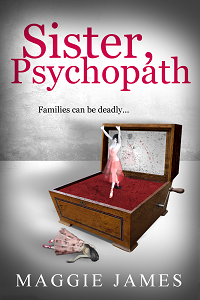 Let's examine my second novel, 'Sister, Psychopath'. Several years ago, I attended a writing course, during which the conversation turned to a real-life murder case. Our teacher told us about a woman who became obsessed with a man, believing herself in love. So much so that she decided to kill his wife and child in the hope of marrying him. She carried out her plan, but her daughter suspected what she'd done, leading to her mother's arrest and conviction. When I heard this, I knew I had the basis for a novel. Lots of questions jumped out at me. How would it feel to be the daughter in this situation? Or the woman herself, obsessed to the point of murder? What about the subject of her infatuation, a man now bereft of his family? In the end, I centred on the daughter's story by creating the character of Megan Copeland, and changed the events to attempted murder, with no child involved. The novel ended up taking a different route, concentrating instead on the relationship between Megan and her sociopathic half-sister, Chloe. Psychopathy always provides plenty of material for novelists! Discovering someone you love has a secret past 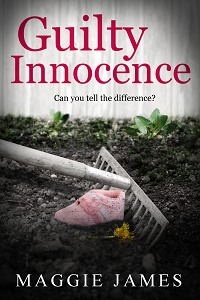 I don't remember the exact source of inspiration for my third novel, 'Guilty Innocence'. I suspect I heard about some terrible crime via the television news, because I do recall the idea came from the premise: how would it feel to discover someone you love has a secret past? That sparked a host of other questions. What could be so awful you'd need to keep it hidden? How might the truth be revealed? Serious crime seemed the best reason for such a cover-up, which begged the question: what, exactly? The answer was child murder; no other crime incites such passions in the public mind. The twist is that Mark Slater is innocent of the killing of two-year-old Abby Morgan. This doesn't mean he's without his demons to slay; his wrongful conviction has always eaten away at him. In addition, he has his nemesis, the twisted and violent Adam Campbell, to confront... Victims who become emotionally attached to their abusers 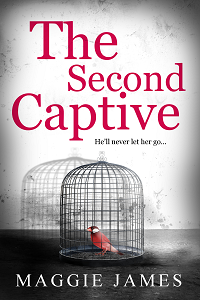 Finally, let's look at my fourth novel, 'The Second Captive'. The book examines the fascinating psychological condition known as Stockholm syndrome, in which victims become emotionally attached to their abusers. Fertile ground for novelists! The inspiration for this book came from hearing about a young woman who returned home after an absence of several years, in a distressed state, but wouldn't say what had happened to her. I was instantly intrigued. Why was she refusing to talk? Where had she been, and with whom? Stockholm syndrome came to mind as the answer. A vulnerable individual, held captive in an abusive situation, who's too ashamed after her escape to reveal the truth. And so the character of Beth Sutton was born, along with the disturbed and dangerous Dominic Perdue, her captor… let's hear from you! I hope you have enjoyed this blog post, and that it's given you some insight into the creative process for fiction writers. Are there any questions you'd like to ask on the topic? If you're a writer, do you get your ideas from specific sources, such as meditation or visualisation? Leave a comment and let me know!
I'm a plotter, not a pantser 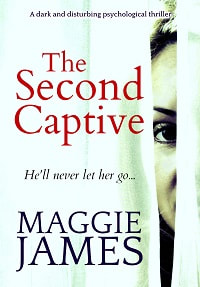 I'm frequently asked to what extent do I plan my novels, and how I plot them. That's what I'll be covering in this week's post, focusing on my fourth novel, The Second Captive. So do I plot my novels in advance, or am I what's known as a 'pantser'? (The term refers to authors who write by the seat of their pants, never quite knowing what will come next). Well, I've tried being a pantser, of sorts. My first novel, His Kidnapper's Shoes, was written from a rough plan thrown together in Microsoft Excel, with a tab for each character and a line summarising what I intended to happen in each chapter. Not really 'pantsing' it, but hardly very organised either. My first draft ended up at 146,000 words. To get to the final novel, which is 82,000 words long, I had to chop out a lot of dead wood and characters, and editing was a far more painful process than it needed to be. Had I planned the novel better, I'd have avoided all that extra work. I resolved to mend my ways, and to plot more thoroughly in future! For me, it works well. I like having a solid plan for each novel before I start work, and I believe it helps avoid writer's block. There are no excuses for not writing when you already have a blueprint for what comes next! The Snowflake Method explained In common with many novelists, I use the Snowflake method to plot my books. Pioneered by Randy Ingermanson, it's a ten-step method of arriving at a coherent plot outline, complete with character sketches. Why is it called the Snowflake Method? Let's look at this way of drawing a snowflake. Take a triangle, add new triangles along each side, and it's not long before a snowflake emerges. The principle is the same for plotting a novel. Each step of the Snowflake method builds on the one before, and within ten steps, you end up with a fully-fledged outline for a novel. The first few stages Step 1 is to write a one-sentence summary of the novel. This is a useful exercise in itself, as it concentrates the mind on the essence of what you're trying to convey. For The Second Captive, Step 1 read like this: 'A young woman and her family suffer the effects of Stockholm Syndrome.' Step 2 involves taking that initial sentence and expanding it into a full paragraph, detailing the story set-up, major events and the ending. Step 3 involves writing a paragraph for each of the characters. This is when I created Beth Sutton, the protagonist of The Second Captive, as well as Dominic Perdue, her antagonist and a dark, disturbed individual. It's always fun creating the bad guys! In Step 4, you take each sentence from Step 2, and expand it into a full paragraph, thus ending up with a one-page summary of the novel. In four steps, we've gone from a sentence to a page. See how the snowflake is growing? Step 5 takes us back to the characters again, fleshing them out into a one-page summary for each of the major players and half a page for the rest. The result should tell the story from the point of view of each character. Developing the snowflake 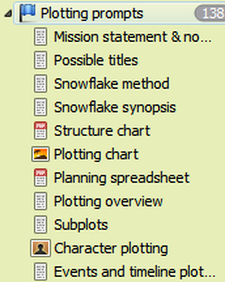 Steps 6 - 9 build on the previous ones. The one-page synopsis ends up as a multi-page one, complete with a paragraph for each scene. The characters are also rounded out as well, with the author preparing charts/notes about each one. I like to go into plenty of detail when I do this. Not just the standard stuff, such as height and weight, but what their motivators are, how they will change by the end of the novel, their interactions with other characters, etc. Their mannerisms, their likes and dislikes, their hopes and fears. I also draw a chart mapping their relationships. Anything and everything that will help me understand them better. And Step 10? The most important one of all - write the novel, using the Snowflake outline already created! Thing can, and do, change... 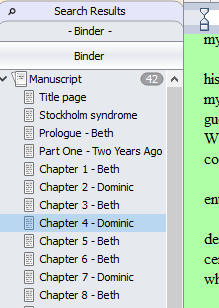 Once I have my outline, I create a manuscript file in Scrivener, the writing software I use (more about Scrivener later!) I set up a tab for each chapter, with a sub-tab for each scene, and transfer in the notes I've already made using the Snowflake Method. I usually base my novels on being around thirty chapters long - that can, of course, change, but it's a useful starting point. I also set word targets for my chapters, aiming for 3,500 words for each one. The screen clip illustrates what I did for the prologue and first few chapters of The Second Captive. Should I choose to, I could colour-code each chapter according to which character was the narrator, or label it as draft, finished, etc. It's also easy to move chapters and text around in Scrivener. Titles, timelines and mission statementsWhat else? Well, I write brief notes about what I want to achieve with each novel. The Second Captive is the first one I've written using scenes, so that formed my mission statement for the book. My previous novels are in whole chapters, so I was keen to play around with using scenes. It was fun! The Second Captive is also different structurally from my other books in that it has a prologue and epilogue, with the main narrative being split into two parts. Each novel teaches me something new. At the planning stage, I also make notes of possible titles (I find naming novels very hard!) Subplots get worked on, too, and I map out a schedule of events linked to a timeline. Getting my timeline right is something at which I'm very bad, so maybe that'll form my mission statement for my next novel! A guide, not a ball and chainEven with a comprehensive outline, I find I need to make changes as I write. The Snowflake Method is a guide, not a ball and chain. It provides a useful framework, but it's hard to see exactly how a plot will work until the writing process starts. Sometimes, an event makes sense at the outline stage, but when I write the relevant scene, it doesn't work so well. I certainly found that with The Second Captive, needing to make big changes to several chapters. Again, Scrivener is immensely useful here, allowing me to move chunks of text easily, more so than in Word, and I can duplicate documents to play around with new ideas. A donkey cart and a Ferrari...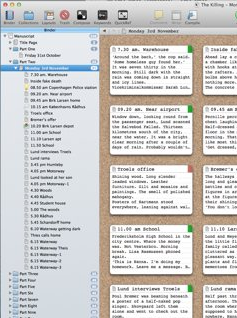 So that's the Snowflake method, and it's what I used to take The Second Captive from a one-line summary to a fully fledged novel, using Scrivener. I praise Scrivener a lot, but I think it's the best writing software on the market, because it's so versatile. I mentioned above that I wrote His Kidnapper's Shoes using Microsoft Word. Once was enough! I'd never go back to doing things that way. Word is to Scrivener what a donkey cart is to a Ferrari, in my opinion. I do use Word for some stages of the editing process, but as Scrivener evolves I foresee that becoming a thing of the past. I can structure my document files however I choose, making it very flexible. Another great feature is that I can add my research notes, pictures, videos, etc, directly into the software, rather than having to flick back and forth to other programmes. In fact, I can split the screen in Scrivener, so I can have my notes in one part and my manuscript in another, making writing much easier. Another way of avoiding writer's block! When I've finished the editing process, the software compiles my manuscript into Kindle format for me, or any other format I choose. Wonderful! Any comments or questions?I hope that this blog post has given you some insight into how a 'plotter' like me plans their novels! Other writers, what's your approach? Are you a planner, a pantser, or somewhere in between? Readers, any questions about the plotting process? Leave me a comment!
Keeping the creative juices flowing...  'I'd love to write a novel,' many people have told me. 'How exactly do you go about it, though?' Good question! In this blog post, I'll attempt to provide an answer. I'll be covering in later posts the details of how I plot, write, edit and publish my books, but today I'll concentrate on how a typical day shapes up for me. Despite the fact I'm a night owl, I write better in the mornings. I don't pretend to understand why, given that I'm far more energetic in the evenings, but hey ho! That's the way it is for me, and I've learned to adapt, forcing myself out of bed at what seems to me an unnaturally early hour. During the summer months, I'm up at six a.m., so I can be at my desk by 8.30 a.m., showered, dressed and ready for work, the same as if I were back in my former employment. The work is a lot more fun, too! Not being a fan of dark mornings, I usually get up later in the winter months, and start work at 9 a.m. So how do I structure my time? Well, I split my day into two parts. I work until I'm ready for lunch, and then from two until five or six p.m. As I'm more creative in the mornings, that's when I focus on my writing. If I'm crafting a novel, I aim to do at least 2,000 words per session, using Scrivener as my writing software. Plotting stage? Then I'll draft the content for a number of scenes or maybe a whole chapter. If I'm revising, I usually edit a chapter a day (although I managed three this morning - yay!) I set targets and dates for almost all areas of my writing. I find this motivates me as well as keeping me accountable and on track. My targets and deadlines are never too rigid, though - I'd hate to shackle myself to a tightly defined schedule. Staying flexible is good and allows the creative juices to flow! Tweet and pin, rinse and repeat...  So once I've had lunch, what then? Well, in the afternoons, I work on my marketing, as well as any sundry tasks I need to do. I'm active on social media such as Twitter and Facebook, and to a smaller extent Pinterest, LinkedIn and Goodreads. Pinterest is fun, and I intend to make more use of it in the future, maybe to showcase my novels' locations, which so far have all been set in Bristol. Marketing isn't restricted to using social media, of course. For example, if I'm planning a Kindle promotion for any of my novels, I need to spend time contacting the major free and discounted book websites and newsletters. And there are always things I need to do besides marketing, such as maintaining this blog. I aim to update it regularly, so I use my afternoon time to prepare my posts, as well as ensuring my website content is up to date. How a glass of Merlot keeps me on track... 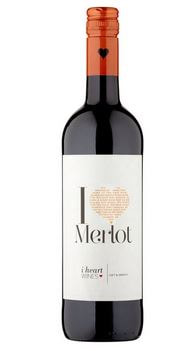 I'm very aware that, although writing novels is great fun, I'm also running a business. That's why, in future, I intend to spend almost as much time marketing my books as I do writing them. I keep on track with what needs doing and when by using task management software (yes, I can be geeky, I admit it!). I also have weekly review sessions, in which I check how my writing career is going. I'll look at my sales figures, blog statistics, my to-do list - anything that needs my attention. Curiously enough, these sessions often take place in local cafes and bars on a Friday afternoon over a glass or two of red wine. Not a bad way to wind down the working week! Unless I have an editing deadline or if I'm participating in NaNoWriMo (National Novel Writing Month - a mad but fun competition in which entrants aim to write 50,000 words of a novel during November), I usually give myself the weekend off. Not at the moment, though - I have a novel to edit! More to come in future posts about my writing process Well, that's a typical writing day for me! As I mentioned, I'll post more about the writing process in the future, starting with how I plot a novel. I'm always being asked where I get my inspiration from! Subsequent posts will also examine the writing process itself, and how I go from zero to an eighty-thousand-plus word novel in about two months. In addition, I'll talk about what follows the first draft - the revision and editing process. I'm atypical amongst writers in enjoying that part! I love polishing my rough first draft, tweaking it until I'm satisfied it's as good as I can get it. I'll blog more in the future about how I do this, along with what's involved in publishing a novel in both Kindle and paperback formats. There's no right or wrong way of working Every novelist treats the process differently, of course, and the above is simply what works for me at present. There are many writers who are happy with Microsoft Word or who write their novels longhand, rather than use Scrivener. Furthermore, not everyone likes to organise themselves to the extent I do; many people prefer a more relaxed approach. We novelists call it being a 'pantser' (someone who writes by the seat of their pants!) whereas I'm definitely a planner. Horses for courses, as they say. Either way, we achieve the same result - the delight of writing a novel!
I hope that this blog post has given you an insight into the daily life of a writer. If you're a novelist yourself, leave me a comment about how you do things. I'm always open to learning new tricks! Or if you're a reader curious about a particular aspect of the writing process, post a question in the comments section. |
Categories
All
Subscribe to my blog!
Via Goodreads
|
Join my Special Readers' group and receive a free copy of 'Blackwater Lake'!
|
Privacy policy Website terms and conditions of use
Copyright Maggie James 2018 - current date. All rights reserved.
Copyright Maggie James 2018 - current date. All rights reserved.
 RSS Feed
RSS Feed
